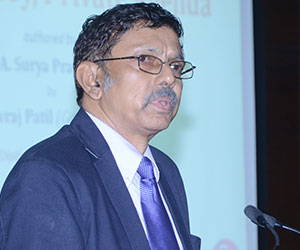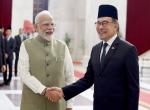Speaking on the role and functions of the Comptroller and Auditor General (CAG) of India in the Constituent Assembly on May 30, 1949, Dr. B.R. Ambedkar, Chairman of the Constitution Drafting Committee, said that this officer was “probably the most important officer in the Constitution of India” because he is the one man who is going to see that the expenses voted by Parliament are not exceeded or varied. “If this functionary is to carry out the duties- and his duties, I submit, are far more important than the duties even of the judiciary ………I personally feel that he ought to have far greater independence than the Judiciary itself”.
Without exception, every member of the Constituent Assembly who spoke on the articles relating to the CAG, including T.T. Krishnamachari (TTK), Pandit Hirday Nath Kunzru, K.T. Shah and R.K. Sidhva – fully endorsed Dr. Ambedkar’s sentiments. The primary objective of the assembly appeared to be to clothe the CAG with such powers that the executive would in no circumstances be able to weaken his independence and objectivity. As a result, the first amendment moved that day was to change the nomenclature of the Auditor General to Comptroller and Auditor General, because as TTK said, the function of the Auditor General is not merely to audit but to have a control over the expenses of government. The nomenclature, he said, should be in consonance with the duties that are entrusted to him by the constitution. The House also took some more decisions in this regard, including the decision to put the administrative expenses of the office of the CAG including salaries, allowances and pensions payable on the charged account (meaning that these expenses would not be voted upon by parliament); to have the President appoint the CAG by warrant under his hand and seal; to affirm that the CAG can only be removed from office in like manner and on the like grounds as a Judge of the Supreme Court; and to direct that the appointee shall, before entering office, make and subscribe before the President, an oath or affirmation as set out in the Third Schedule. The debate in the Constituent Assembly and the final wording of these Articles in the Constitution tells us a lot of the exalted perch that the founding fathers gave to the CAG.
This background is essential in order to understand the mischief that may be afoot at this juncture to undermine the independence of this institution while choosing a successor to Mr. Vinod Rai, the incumbent CAG, with whom the Congress Party- led United Progressive Alliance (UPA) government at the Centre has been having a running feud. The Union Government has repeatedly locked horns with the CAG over the last two years because its image has taken a beating over the scams exposed by the country’s supreme audit agency including the ones relating to the conduct of the Commonwealth Games and the scandalous and unfair manner in which 2G Spectrum and coal blocks were sold to private entities. Since they had no credible defence, several ministers in the Union Government and some leading members of the Congress Party have gone on the offensive and tried, without much success though, to accuse the CAG of having a political agenda.
Meanwhile, since the incumbent CAG, Mr. Rai is due to retire in May, 2013, there is a lurking fear that the government may see this as a god sent and try to have a “committed” CAG in place, just like the “committed judiciary” that the Congress Party wanted during the Emergency. This fear is not without basis. In fact, Mr. V. Narayansamy, the Minister of State in the Prime Minister’s Office let the cat out of the bag some months ago when he told PTI, the reputed news agency, that the government intended to make the office of CAG a multi- member body. In that interview the minister had claimed that the government was considering the recommendations made by the V.K. Shunglu Committee on broad-basing the CAG and making it a multi-member body. The minister’s statement, coming as it did in the wake of the financial scandals unearthed by the CAG, caused a political uproar forcing the minister to retract and even claim that he had been “misquoted”. But, this was enough for all to realize that the government’s intentions were to be doubted.
There is a history to these fears because the Congress Party, which enjoyed a two-thirds majority in Parliament in the 1970s, turned India’s democracy into a dictatorship, made drastic constitutional changes to weaken the judiciary and virtually wrecked the independence of many constitutional authorities, including the CAG. The mantra in those days, as stated earlier, was a “committed” judiciary – meaning a judiciary committed, not to the Constitution, but to the Prime Minister of the day Mrs. Indira Gandhi. Similarly, the government, which had imposed the Emergency in 1976, passed orders to weaken the office of the CAG. We have it on the authority of Mr. Y. Krishnan, former Deputy CAG, that until 1976, all papers and documents pertaining to the subject matter under audit scrutiny were made available to CAG and this included secret and confidential records. However, in 1976 the government decided that “only books and accounts need be made available to Audit and it was not obligatory for government to furnish records or papers containing discussions within government, leading to a particular decision or formulation of a particular policy”. Luckily the Janata Party which was voted to power in 1977 repaired much of the damage done to our democratic Constitution by restoring the original articles and deleting the obnoxious amendments introduced during the Emergency. Similarly, the orders passed to weaken the CAG in 1976 were withdrawn and the original authority of the CAG was restored by the Janata Party, which put democracy back on track.
However, it would be unwise to think that these undemocratic tendencies are now part of history, because the ruling dispensation has often laboured to remind us that the Emergency mindset is still alive and kicking. Two recent decisions of the government – the appointments of Mr. Navin Chawla as Election Commissioner and Mr. P.J. Thomas as Central Vigilance Commissioner – go to establish that the Congress Party’s discomfort with healthy democratic norms and independent constitutional authorities persists. The damage that these appointments did to the democratic environment will be discussed a little later.
Meanwhile, if we are to prevent the executive (politicians) from undermining the constitutional scheme, a collegium approach to the selection of the CAG becomes an urgent necessity. The CAG is fully empowered by Articles 148-151 to discharge his functions independently and fearlessly. But if the choice of the CAG is left to the government of day, especially in times such as these, there is every danger of the government choosing a person who is not strong enough morally and ethically to leverage the powers vested in him by the Constitution and act without fear or favour.
Some retired bureaucrats and Members of the Forum of Retired Officers of Indian Audit and Accounts Service have fired the first salvo in this regard by writing to the President Mr. Pranab Mukherjee and the Prime Minister demanding that the need of the hour is a “transparent, institutionalized selection mechanism” for choosing the next CAG.
They have suggested that a Committee headed by the Prime Minister and comprising the Finance Minister, the Lok Sabha Speaker, the Leader of the Opposition in the Lok Sabha, the Chairman of the Public Accounts Committee and the Chief Justice of India or a legal luminary should be constituted to select the CAG. The signatories to this memorandum have also referred to the precedents that now exist for adopting the collegium approach to appoint persons to high offices. They refer to the committees constituted to choose the Central Viligance Commissioner and the Chairman of the National Human Rights Commission Chairman. The same procedure should be adopted to select the CAG, they say. Does this not merit consideration in view of the past record of the UPA?
Published Date: 4th April 2013










Post new comment